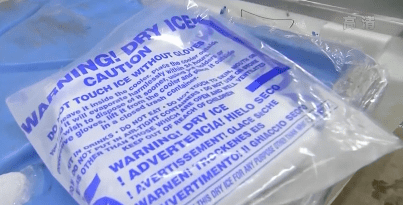Because COVID-19 vaccines such as Pfizer need to be stored at very low temperatures, cold chain logistics has become a new problem for vaccine storage, distribution and vaccination.
As a result, dry ice has become a necessity in cold chain transportation. Large doses of vaccine transportation require large doses of dry ice, and the demand for dry ice also rises. At present, the price of dry ice transportation in some areas has risen to 20 times the usual price.
U.S. dry ice producers interviewed by CNBC said that in recent days, their new demand has basically come from all vaccine-related institutions and enterprises, including hospitals, vaccine manufacturers and logistics and transportation companies.
The production of these dry ice is mainly used to ensure the transportation and preservation of Pfizer vaccines.
Pfizer’s vaccine requires preservation at minus 70 degrees Celsius. Although they have not yet obtained formal approval from the FDA of the United States, in fact, some dry ice producers said that they had received production demand since the Pfizer vaccine reported significant benefits in November and began to buy additional machines to rush to produce.
Chris Vader, a dry ice supplier in New Jersey, USA: Yesterday was a very busy day. We shipped 70,000 pounds of dry ice, so we are a little short of stock, and now the supply is almost twice as much as usual.
Dry ice is actually solid carbon dioxide, which is also a very important cold storage agent when transporting frozen materials. This year, the demand for frozen food transportation has increased due to the epidemic.
In addition, under the epidemic, the demand for car travel has decreased, gasoline consumption has decreased, and ethanol production has also plummeted. Therefore, there is a shortage of raw materials for dry ice production. Of course, the greater challenge for dry ice production and transportation is that its shelf life is very short.
Rich Gottwald, CEO of the American Compressed Gas Association: When dry ice is produced, it will be regasified after 5 to 10 days. It has a life cycle.
Therefore, air transportation has become a very critical link.
However, dry ice has always been listed as a dangerous product by ICAO and the United States Department of Transportation, because dry ice sublimates into a gas form when decomposes, and may replace oxygen in the cabin under poor ventilation, which poses certain safety risks.
However, in order to ensure the supply of vaccines, the FAA of the Federal Aviation Administration has also appropriately relaxed air transportation restrictions on dry ice.
However, some airlines are seeking to transport dry ice and other medical supplies at “heinous” high prices before the holiday, the WHO logistics official said Tuesday.
It is understood that a box containing 1,000 doses of Pfizer vaccine needs about 50 pounds of dry ice, and Pfizer currently plans to supply 50 million doses of vaccines before the year and more than 1 billion doses by next year, which will also be a big challenge for the supply of dry ice.



